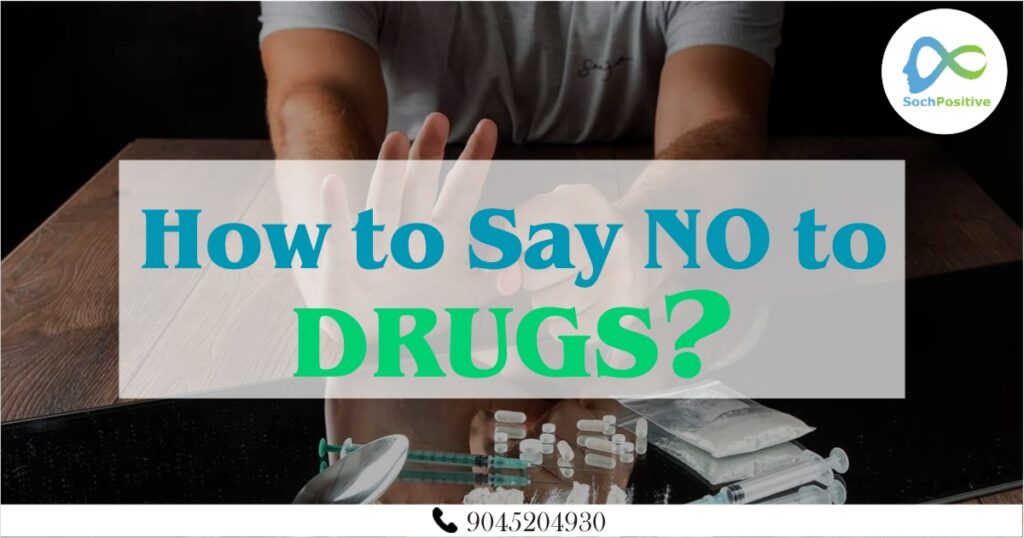By Ms. Shourya Gupta
Many people do not understand why or how people become addicted to drugs. Some might mistakenly think that those who use drugs lack morals or will power and that they could stop their drug use simply by choosing to. But, in reality, drug addiction is a complex disease, and quitting drugs usually takes more than good intentions or a strong will. Drugs change the brain in ways that make quitting hard, even for those who want to. But fortunately, knowledge about how drugs affect the brain and the treatments that can help people recover from drug addiction and lead productive lives is well established.
What Is Drug Addiction?
Addiction is a chronic disease characterized by drug seeking and its use that is compulsive, or difficult to control, despite harmful consequences. The initial decision to take drugs is voluntary for most people, but repeated drug use can lead to brain changes that challenge an addicted person’s self-control and interfere with their ability to resist intense urges to take drugs.
Many people believe that drug addiction only happens in people with certain kinds of backgrounds. But the truth is, addiction does not discriminate, it affects all types of people from different backgrounds and different ages.
Signs of Drug Dependence or Addiction
- Being unable to quit or control the intake of drugs
- Doing drugs in more and more amounts to get the same effect as the first few times
- Spending a lot of time doing drugs
- Having withdrawal symptoms when the drug intake is stopped. These may include vomiting, headache, sweating, shakiness, and anxiety
- Giving up other activities and responsibilities for drugs
- Continuing with drug use even though it harms personal relationships and causes health problems
Physical Impact of Drug Addiction
Some common physical problems caused by drug addiction include:
- Changes in body temperature
- Irregular heartbeat
- Changes in sleep patterns
- Brain damage
- Seizures
What happens to the brain when a person takes drugs?
Most drugs affect the ‘reward circuit’ in the brain causing a feeling of extreme happiness called ‘euphoria’, as well as flood it with a chemical messenger called ‘dopamine’. Dopamine is a hormone which is responsible for the feelings of happiness and being rewarded and blocking pain. The increase of dopamine in the reward circuit causes the reinforcement of this pleasurable behaviour of taking drugs, leading people to repeat the behaviour again and again.
As a person continues to use drugs, the brain adapts by reducing the ability of cells in the reward circuit to respond to it. This reduces the high that the person feels compared to the high they felt when first taking the drug – an effect known as ‘tolerance’. They might take more of the drug to try and achieve the same high. These brain adaptations often lead to the person becoming less and less able to derive pleasure from other things they used to enjoy in the past, like work, responsibilities, food, sex and social activities.
The brain consists of parts that work together as a team. Each of these parts has its own responsibilities for handling specific functions and performance. Drugs make it difficult for these areas of the brain to communicate with each other properly. Long-term use of drugs can cause changes in these brain chemical systems and circuits, affecting functions that include:
- Learning
- Judgement
- Decision-making
- Stress
- Memory
- Behaviour
Alterations in the level of dopamine in the brain can also cause mental health disorders like Depression, Anxiety, Bipolar Disorder and Schizophrenia, which are a common by-product of long term drug use.
Why do some people become addicted to drugs while others don’t?
No one factor can predict if a person will become addicted to drugs or not. A combination of factors influences risk for drug addiction. The more risk factors a person has, the greater the chance that taking drugs can lead to addiction. The factors that influence a person’s risk for developing alcohol addiction are:
- Biology. The genes that people are born with account for about half of a person’s risk for addiction. If there is a history of any kind of addiction in the family, then the person becomes even more prone towards it. Gender, ethnicity, and the presence of other mental disorders may also influence risk for drug use and addiction.
- Environment. A person’s environment includes many different influences, from family and friends to economic status and general quality of life. Factors such as peer pressure, physical and sexual abuse, early exposure to drugs, socio-economic status, stress, criminality of household members, mental illness in family, parental discord, quality of parenting and parental guidance can greatly affect a person’s likelihood of drug use and addiction.
- Development. Genetic and environmental factors interact with critical developmental stages in a person’s life to affect addiction risk. Although taking drugs at any age can lead to addiction, the earlier that drug use begins, the more likely it will progress to addiction. This is particularly problematic for teens. Because areas in their brains that control decision-making, judgement, and self-control are still developing, teens may be especially prone to risky behaviours, including trying drugs.
Can drug addiction be cured or prevented?
Drug addiction is treatable and can be successfully managed. Researches show that combining addiction treatment medicines with cognitive behavioural therapy ensures the best chance of success for most patients. Treatment approaches tailored to each patient’s drug use patterns and any co-occurring medical, psychological, and social problems can lead to a better recovery. Apart from Behaviour Therapy, Art therapy, Music therapy, Family therapy and Group Therapy are some well researched and established treatment modalities for drug addiction.
Drug use and addiction are even preventable. Results from a research by National Institute on Drug Abuse, United States (NIDA) have shown that prevention programs involving families, schools, communities, and the media are effective for preventing or reducing drug use and addiction. Although personal events and cultural factors affect drug use trends, when young people view drug use as harmful, they tend to decrease their drug taking. Therefore, education and outreach are key in helping people understand the possible risks of drug use. Teachers, parents, and health care providers have crucial roles in educating young people and preventing drug use and addiction.
One of the NIDA Report emphasizes strengthening the protective factors through family, including increasing family bonding and using appropriate discipline. The following family characteristics place children at a higher risk for substance abuse – parent with a history of alcoholism and drug abuse, high levels of family conflict, lack of and/or inconsistent parental discipline. It follows that eliminating these risk factors can reduce the risk of a child/adolescent abusing drugs and alcohol. Once these risk factors are identified, families may benefit from formal prevention programmes that can focus on enhancing family bonding, parenting skills (including communication, rule-setting, appropriate disciplinary actions) and changing parental behaviours that may place a child at risk for later abuse.
In addition to the family programmes, NIDA emphasizes school and community programmes as being beneficial in drug abuse prevention. The Report also suggests introducing programmes at an early-age to address risk factors for later drug abuse, such as early aggression, poor social skills and academic difficulty.








